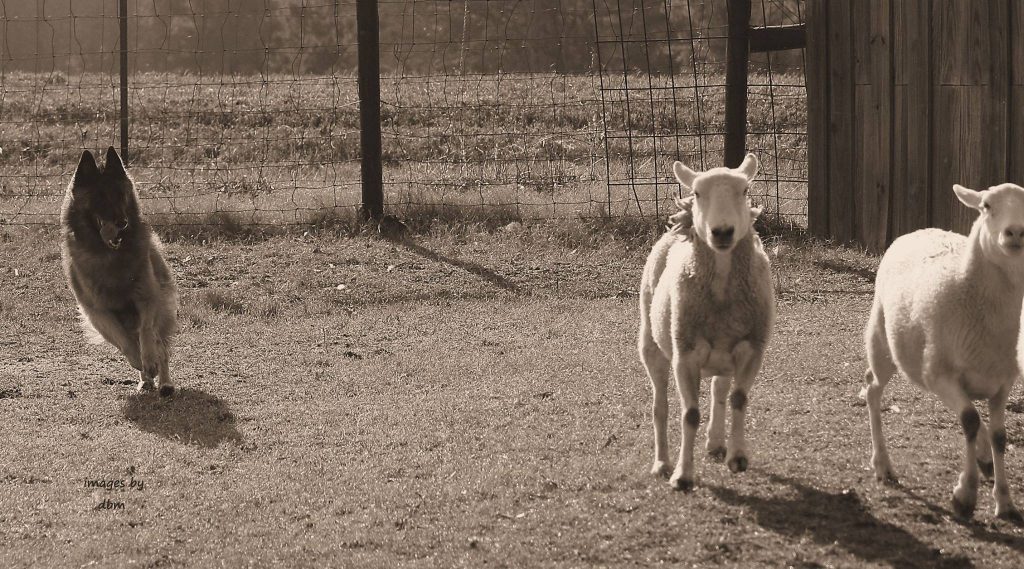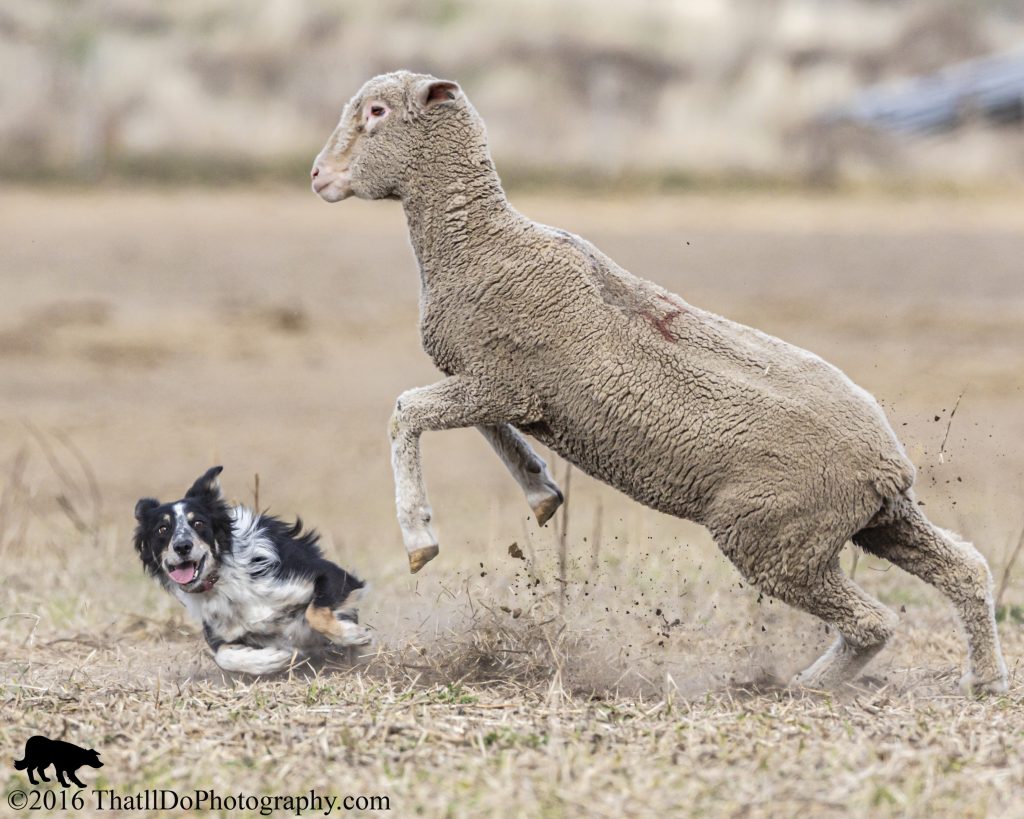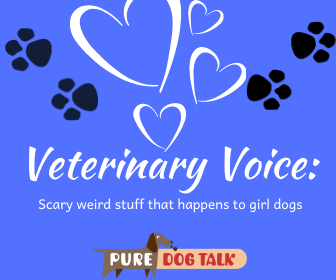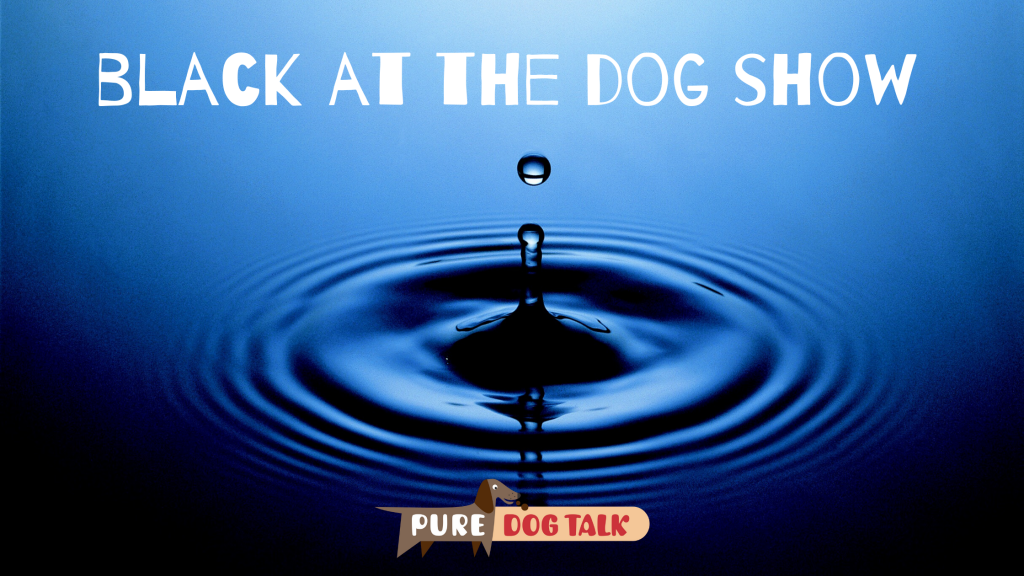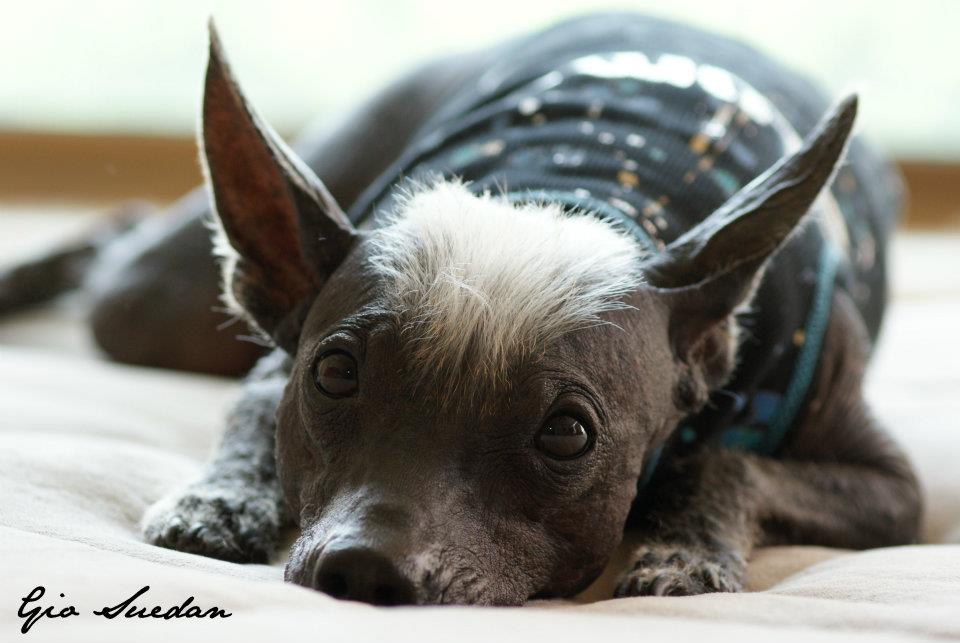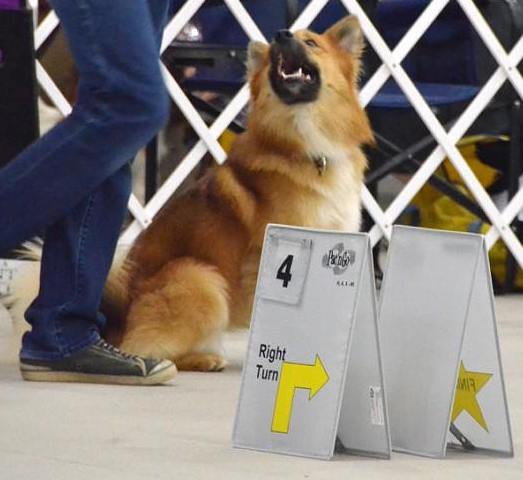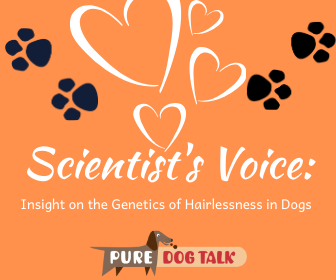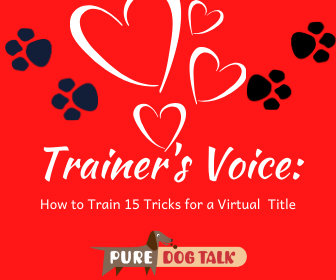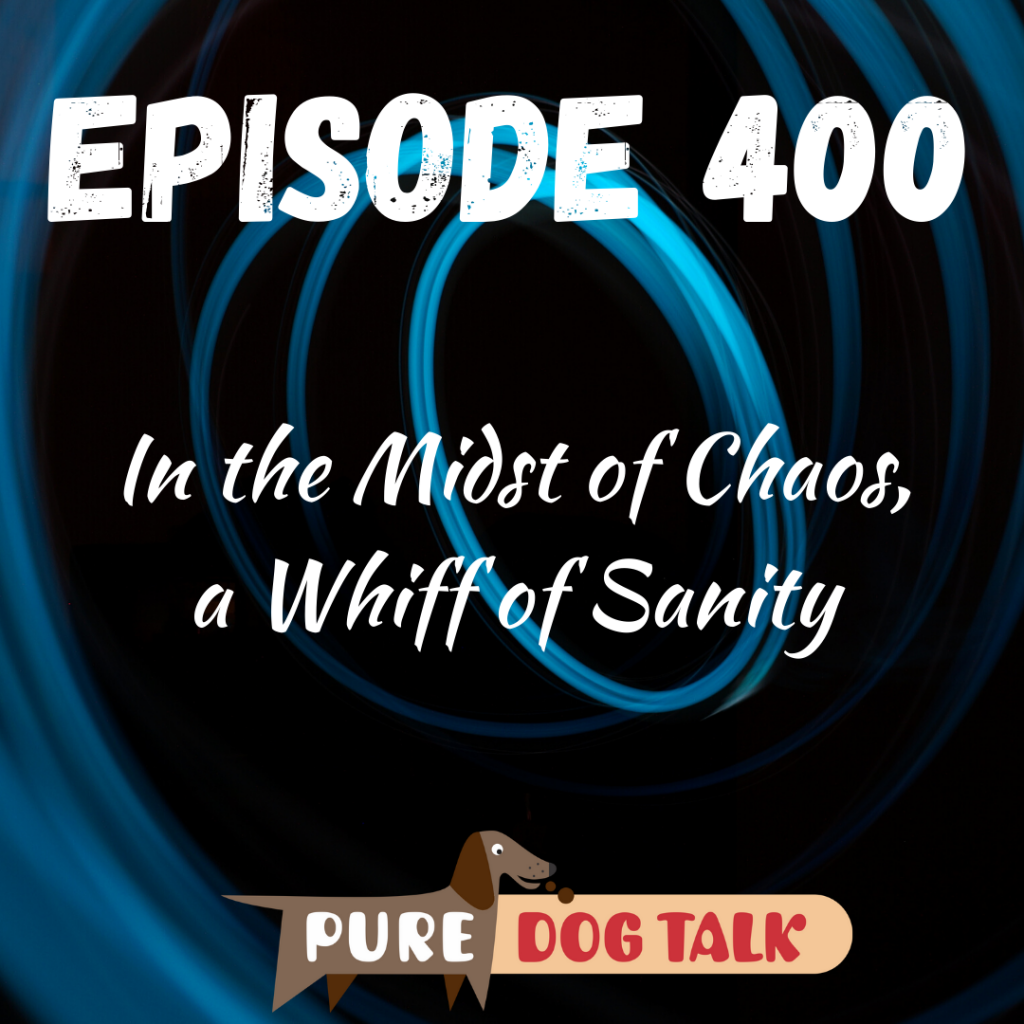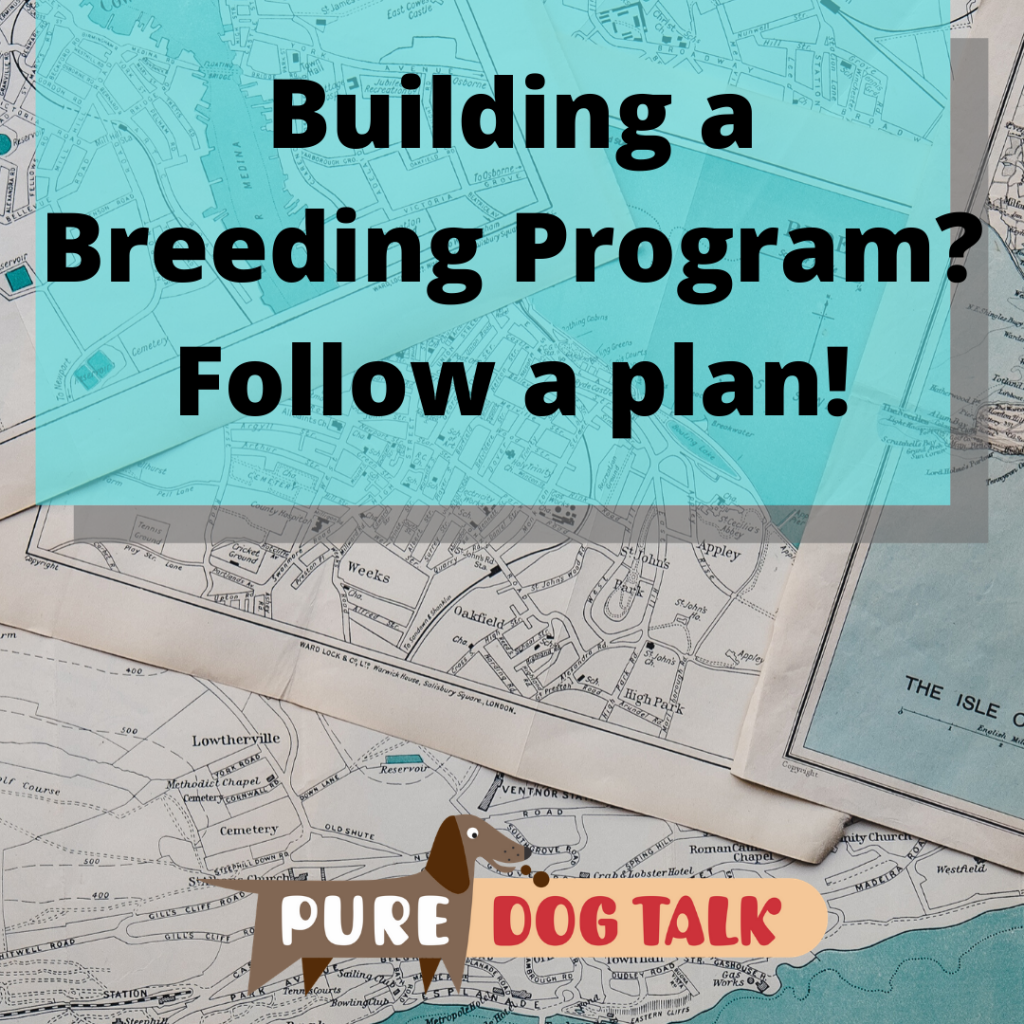Posts by Laura Reeves
408 – Janina Laurin Reflects on a Lifetime in Dogs, the Belgian Breeds
407 – Canine Action Photography Tips, Tools and Rules
406 – Veterinary Voice: Scary weird stuff that happens to girl dogs
Veterinary Voice: Scary weird stuff that happens to girl dogs
Dr. Marty Greer joins host Laura Reeves for a conversation about some of the scary, unusual medical emergencies and conditions which can affect our breeding bitches. On our list are prolapsed uterus, vaginal hyperplasia, inguinal hernia with the uterus in it, torsioned uterine horn, ovarian tumor, and spay or don’t spay during a C-section.
Included below is Dr. Greer’s peer-reviewed submission on the topic of not spaying bitches on the table during a C-section.
Reasons NOT to spay your bitch at her c-section:
- Pregnancy is a uniquely thromboembolic event. This means she is more likely to form blood clots during late pregnancy and in the immediate post-partum period. All bitches, whether they have had a c-section or not, are at increased risk of developing blood clots. These clots, as in humans, can be life-threatening, particularly if they lodge in the heart or brain. If she were to be spayed at this fragile time, she is a greater risk of blood clots formed at the suture sites, increasing the risk of blood clots. This is the most common cause of death in the period shortly after a c-section.
- The bitch shares 1/3 of her blood volume with her puppies. Only a small portion of this shared blood volume will pass to the fetuses. Most is left in the uterine lumen or in the uterine wall and vasculature. Over time, this blood will be resorbed by the bitch to replenish her blood volume.
- During pregnancy, the blood flow to the uterus is expanded to support the pregnancy and placentas. When the blood vessels are ligated (tied off), her blood pressure is lowered. Some bitches as they recover from anesthesia and her blood pressure increases to normal, a blood vessel may leak or a suture may slip off, resulting in bleeding, which may either lead to the need for another interventional surgery, or if this is rapid and severe, she may die prior to getting her back to surgery.
- Additionally, all of the blood vessels in the broad ligament (where the blood vessels supporting the ovaries and uterus) need to be tied off. If any are missed, there will be bleeding and possible drop in blood pressure which can lead to death.
- When she loses blood rapidly from the removal of the uterus and ovaries (if she is spayed), she will suffer a rapid drop in blood pressure, which is likely to lead to cardiac and/or respiratory compromise or crisis during the procedure, leading to death.
- Depending on the surgeon and techniques used, performing a spay at the c-section will add at least 30 minutes to a c-section. This leads to a delay in her bonding to her pups and allowing them to nurse during this early and critical period when her pups need colostrum and energy.
- Be particularly wary if the veterinary staff wants to do an en bloc c-section – where they remove the uterus in its entirety with the pups still inside. This is an almost certain death sentence for your valuable litter.
- A second surgery for a spay is safer than a spay at c-section.
405 – Black at the Dog Show. What you see and what it is.
404 – The Athletic, Wicked Smart, Primitive Xoloitzcuintli
403 – Virtual Reality: Step by Step to a Rally Title for Your Dog
Virtual Reality: Step by Step to a Rally Title for Your Dog
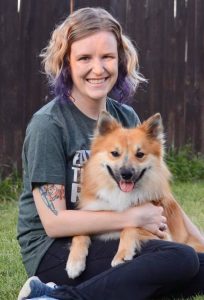 Trainer Gabi Vannini from What A Great Dog! walks us through the process to earn a virtual rally title for your dog. Below is a short excerpt from our conversation. Listen in to the podcast for excellent training tips, rally performance do’s and don’ts and more.
Trainer Gabi Vannini from What A Great Dog! walks us through the process to earn a virtual rally title for your dog. Below is a short excerpt from our conversation. Listen in to the podcast for excellent training tips, rally performance do’s and don’ts and more.
“You can submit videos for your rally novice title,” Vannini said. “So the entry level rally, you can submit three videos and get an actual rally title. It’s the same as if you went to a trial. You would have to get three qualifying legs. They’re having judges actually score these runs and look at them, so it’s not just a pass/fail. You’re actually getting your score out of 100 on that and having to do it just like you would in a trial. They’ve got five different courses that you can pick from to try out. They’ve set courses for you and you can do it in your backyard or your local park. If you have a local training building that you can rent the ring out, I know that’s what a lot of people have been doing, but you can get creative with it. Wherever you can fit a reasonably sized rally course and either set up a tripod or get someone to video for you and submit to AKC and get your actual rally novice title.
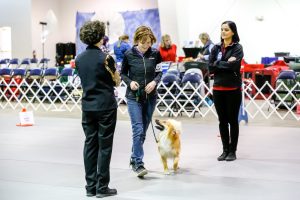 “(AKC has) been really helpful with … the rally maps. (They) have a specific spot on the map, ‘place camera here’ so that they can get the best view for the judges to be able to look at it. They’ve got the maps laid out for you. All five maps that you can pull up and use. They’ve got a really simple way to submit everything. They got their instructions and all of that right there. They’ve got a nice little how to perform the rally sign setup for you, so it’s really making it very accessible for people who are wanting to try something different with their dog.
“(AKC has) been really helpful with … the rally maps. (They) have a specific spot on the map, ‘place camera here’ so that they can get the best view for the judges to be able to look at it. They’ve got the maps laid out for you. All five maps that you can pull up and use. They’ve got a really simple way to submit everything. They got their instructions and all of that right there. They’ve got a nice little how to perform the rally sign setup for you, so it’s really making it very accessible for people who are wanting to try something different with their dog.
“I think this is going to be a really good opportunity. For people that know rally and do rally, you can fly through these if you want to. But I think it’s a really nice thing for people that maybe have done some of those trick titles or CGC … and now they have something a little more that they can learn about and do at home. By the time we get rolling back in dog shows, maybe they’ll want to jump up and go into rally intermediate, where it’s similar signs and are still on leash and see how things go.
“You always are gonna get the people that are gonna say that it’s gonna cheapen their rally title that they got. All things change. I got an Open title with my dog and no where does it say on my title certificate that he did the long stay in a group. Just because somebody can go do a virtual rally, it doesn’t mean yours is less. Those people aren’t competing with you. If you’re real serious about your rally and you want to get like 100 points on everything, wait for a dog show. The people who are being brought in by this rally virtual program, they’re not your competition. You don’t need to look at them as some kind of threat.”
402 – Insight on the Genetics of Hairlessness in Dogs
Insight on the Genetics of Hairlessness in Dogs
Adam Boyko, Chief science officer and co-founder of Embark, joins host Laura Reeves to talk about the Fox I3 gene, that causes hairlessness in many dog breeds.
“So it’s a gene that’s gonna be involved in what we would call ecto dermal differentiation,” Boyko said. “So it’s going to affect a lot of tissues that are in the ectoderm. Not just hair follicle formation but also things like the inner ear or the sweat glands or dentition. All of these things that are related because they’re coming from the same developmental tissue.”
“The canine genome was first sequenced in 2005, so we have a reference genome now from Tasha the boxer and this was a big $25,000,000 project,” Boyko noted.
“(Some of) my colleagues worked on it. This was before I got into dog genetics. I was graduating from Purdue with a degree in biology but I was studying butterflies at the time. So I didn’t join the dog field until after we had a genome. I switched because there’s so much more cool stuff you can do with an organism that has a genome and particularly with dogs.
“In 2008 (researchers) were able to identify the gene that’s different between dogs that are hairless and dogs that aren’t. This Fox I3 gene. The mutation itself is just this insertion of seven base pairs. Remember, the genome is like 2 1/2 billion base pairs. So that little mutation then is the difference between whether the dog has hair or doesn’t.
“One of the projects I started out with … we call the village dog project. Most of the dogs in the world aren’t purebred dogs and they’re not even mixed breed dogs the way you and I think of mixed breed dogs. They’re actually natural populations of dogs that have been around for thousands of years and probably have some really interesting biology. If you look at village dogs across the new world, you do occasionally come across dogs that carry this mutation and have the hairless phenotype. If you look at dogs that have a very, very similar sequence, so that the same genetic background but don’t have the mutation, these are the closest relatives for where the mutation occurred for dogs that don’t have the mutation. It’s actually like Alaskan Huskies and other northern dogs that are very puffy, puffy dogs, but they have DNA still in them that pre-Columbian Native American dogs had.
“Genetically you get the signature that this is a mutation that arose in the new world before European contact and this is the basis for Mexican hairlessness right so the Xolo, the Peruvian Inca Orchids, as well as the Chinese Crested.
Two copies is deadly
“This mutation is actually lethal. A dog with two copies of the mutation dies in utero. So, every hairless dog has one copy of the broken Fox I3 gene and one good copy of the Fox I3 gene.
“The “powder puff” have better dentition. This Fox I3 mutation not only effects the development of hair follicles and interrupts them throughout most of the body, but the dentition is also affected. The teeth, both the deciduous teeth and the permanent teeth, generally you don’t see as many developed, they’re not as well formed, they tend to be more conical, they’re a little more tusk like, they point out a bit more. These are all kind of developmental defects. The powder puff doesn’t have these defects, not because it has a better Fox I3 gene that you want to breed in, it just doesn’t have the broken one.”
Evolutionary purpose of hairless dogs
“I think ultimately the purpose is that people really like unique and distinctive dogs,” Boyko said. “You have this mutation which has a dominant effect, so as soon as it arose that dog was hairless. And it arose in an environment where people thought that this was a sacred dog or a dog that they wanted to have around.”
From XCA:
“A uniquely New World breed, the Xoloitzcuintli stands out for being hairless, although there is a coated variety. The Xoloitzcuintli was one of the earliest breeds to be added to the American Kennel Club studbook – in 1887 under the name “Mexican Hairless”. This is a robust and healthy breed that evolved in the primitive jungles of Colima, Mexico. Archaeological evidence has been found in the tombs of the Colima, Mayan, Toltec, Zapoteca, and Aztec Indians dating the breed to over 3500 years ago. Long regarded as guardians and protectors, the indigenous peoples believed that the Xolo would safeguard the home from evil spirits as well as intruders. In ancient times the Xolos were often sacrificed and then buried with their owners to act as guide to the soul on its journey to the underworld. These dogs were considered a great delicacy, and were consumed for sacrificial ceremonies – including marriages and funerals.
The name Xoloitzcuintli (pronounced “sho-low-itz-queent-li”) is derived from the name of the Aztec god Xolotl and Itzcuintli, the Aztec word for dog. (Xolo owners are frequently stopped and find themselves explaining not just the breed – but teaching people how to pronounce the name!) Indigenous peoples believed them to have healing powers and they were thought to bring relief from a vast variety of ailments. That belief still survives today in the rural parts of Mexico. One of the reasons being that they feel warm to the touch – and can actually act as a “hot water bottle”.”
“Gene mutations happen accidentally,” Boyko said. “They happen randomly. Then they are perpetuated because they serve a purpose evolutionarily. Because dogs are domesticated and people can selectively breed them and selectively protect them and provision them, you’ll get mutations like this that really would disappear rather quickly if it happened in a wild population. If you had a hairless Wolf that didn’t have good teeth, it wouldn’t last long. It’s not going to survive to adulthood and reproduce.”
Be sure to check back next week for our conversation with Xolo breeders and enthusiasts.
401 – How to Train 15 Tricks for a Virtual Trick Dog Title
400 – In the Midst of Chaos, a Whiff of Sanity
Episode 400 – In the Midst of Chaos, a Whiff of Sanity
Welcome to our annual summer tradition of noting this benchmark. Pure Dog Talk has been downloaded 700 THOUSAND times! Eek…
Plague, Protests, Locusts ….
It’s the end of the world as we know it… Or not. Or sort of.
The last couple years this “celebration” pod was all about getting ready for the summer shows. This year has been hard. A few shows are attempting to go forward, but statistically it’s a small number compared to the ones that are cancelled. I know far too many people who are struggling — mentally, emotionally, financially. I think it’s important to note that there were NO dog shows held for years during WWII… Our sport survived that and it will survive this. Perhaps it will look different.
Perhaps we’ll pick up new tools, new attitudes and new approaches, but our passion for purebred dogs, our friendships, our joy in the anticipation of a new litter, our love of the beauty, predictability and plain companionship of our dogs isn’t diminished by our current challenges.
And while the world seems completely unbound and our lives turned upside down at the blink of an eye, here’s my hope for us. That we can walk away from what divides us … that politics or socio-economic status or race, creed or religion will not be allowed to define us. That our common passion, our common decency and our common sense will prevail.
That the diverse, vibrant group that is OUR tribe can rise above, can transcend the rancor and division and roiling fear and bitterness that is sweeping the country and even the world. That we can overcome and improvise, gut it out and get up again, tap the deep well of passion and apply our staggering reserves of knowledge to moving forward.
In support of this mission, here’s what we’re doing here at Pure Dog Talk:
- Cyber Sweepstakes –
- PureDogTalk Fund,
- Videos available for everyone to watch as a learning tool,
- Critiques from judges, etc
- Shopping Tab on the website
- Archived episodes on the website
- Patrons –
- After Dark sessions,
- PDTU YouTube link
- Sponsors
Pollyanna thoughts, pondering observations and puppy reality checks
With that I leave you with these two “throwback Thursday” items… columns written in what feels like another world, another time and yet, timeless…
Because our TRIBE is family. And family IS what matters…
Blest Be The Ties That Bind
I’m sitting here in my office on a cold, grey Oregon morning while a GWP puppy slams her bone around on the concrete floor, jumping up and down off the blanket draped leather recliner.
This puppy represents the sixth generation of a direct line back to my foundation bitch, who I co-owned with my mom. But more than that, she is the living embodiment of 30 years of friendship and partnership with Mom in breeding dogs. A lifestyle and journey represented for hundreds of us by the AKC Breeder of the Year Award given Sunday to mother-daughter team Gwen Demilta and Carissa Demilta Shimpeno.
I don’t know these women personally, but I expect their story is a lot like ours and so many others.
It was 3 a.m. on a miserable December morning in 1996. I was in Washington watching a bitch try to crash after a C-section — the first litter I’d whelped on my own. It was 6 a.m. in New Hampshire, where Mom had just lost a puppy from her umpteenth litter, and in a couple hours would send the babies’ great grandmother to the Rainbow Bridge.
I still get weepy remembering that horrible phone call. We were consoling each other, brainstorming solutions, crying and trying to laugh. Our final conclusion was that we should take up selling pencils on a street corner in Hawaii. That breeding dogs was just too hard.
That was 18 years ago, to the day. The intervening time has brought us to even darker low points, and to some brilliant, sparkling, spectacular highs. More than a dozen litters for each of us. Producing champions, Best in Show winners, top dogs, history making dogs. All done hand in hand, even when we were physically far apart.
At its core, this is what the sport means to me. Family. Friendship. A lifetime of passion.
For every one of the deservedly famous families in the spotlight, there are several dozen more working quietly in the wings and creating their own legacies. No matter how large or small in terms of the big stages of the sport, these folks are making an impact on their chosen breeds. And, more importantly, forging unbreakable bonds with the strength to keep going when it would seem impossible.
As our parents and mentors age, we watch with conflicting emotions of pride and exasperation as they continue breeding, doing work they shouldn’t and shouldn’t be able to do. And yet, for many of them, this — the dogs, the hopes, the dreams — is quite simply what keeps them getting out of bed each day.
Those of us fortunate enough to be given the gift of mentorship from these breeders are honor-bound to return to them the respect and the credit they have earned over decades of literal blood, sweat and tears. Their hands may not grip as well, their knees and backs might not be as strong, but their knowledge, imagination and experience flow through the veins of each animal in the pedigree.
Next week, I will spend yet another Christmas Eve whelping puppies with my mom. The gifts we share don’t have any ribbons or bows, wrapping paper or glitter, but they are far more precious than silver and gold.
And, so, a toast. To the families that ensure this sport endures. And the love that keeps it strong.
As always, this is JMHO.
As the Wheels Turn from December 2014….
Less than year after I wrote this, my mom passed away…
Treasure what you have each day. If this current disaster has taught us NOTHING ELSE, it should certainly have permanently ingrained in us gratitude for what we have today… because literally tomorrow it may be gone.
Peace out. Namaste.
BONUS TRACK: In a World Gone Mad….
399 – Breeders Part 2: Family, Friends and Mapping a Journey
Breeders Part 2: Family, Friends and Mapping a Journey
Top Breeders discuss building a family of dogs with small numbers and defined goals.
Wendy Paquette, Amanda Kelly and Chris Heartz return to finish their conversation about building a family of dogs, using the standard as a driver and mapping out a plan.
Wendy: “What I’ve done over the years is lease males from other breeders. I finished (the dogs) for them in Canada and kept them for about six months to a year. I bred 6-10 bitches to that same dog. So, what I did was, I could tell whether there was consistency or not. And I would keep one or two out of every litter and send the dog back home and go from there with the offspring.
“So then, I had a basis with one dog being dominant and if I felt that dominant dog was a great producer consistently, then I doubled on it. But if it wasn’t, oh well, I had bunch of pets that year.
“The Breeders that just breed to the dog next door or the dog in the next state or whatever don’t have a clue what they’re producing. They just keep the most pretty marked puppy that has an attitude then they wonder why they’re not getting anywhere. Well they don’t have any idea where those dogs came from to begin with. They have no foresight.
Health and welfare
Chris: “The health of the breed is everything if you want it to continue. We’re not preservation breeders if we say it doesn’t matter about the teeth (for example), they’re not mentioned in our standard. Well maybe it does matter. And so I think, just by seeing what is available in the rest of the world and how other breeders approach your breed and what they got to show for that is the best education in the world. And to just sit at home and say this is how we’ve always done it. It’s not good enough.”
All in the family
Amanda: “I loved Wendy’s discussion about building a breeding program and having the ability to try different things and having maybe a critical mass of dogs. One of the things I think a lot of people in today’s breeding world struggle with is not having the ability to have that many dogs. For whatever reasons they live in the suburbs or they just can’t keep that many dogs or whatever. Chris gave me some really helpful advice and she talked about working with other breeders in a family.
Chris: “What we really, really are passionate about is, if we can’t sell you a dog and we love this person because they have the same passion and the same commitment to the same type of dog that we have … these are people that dedicated their lives to breeding better dogs … we say we can’t sell you a dog but we can lease you a dog. So our males have way more miles on them than I do.
“All we can give as our gift is our dogs. (We) will share them … with like-minded people and the reason is selfish. Because those people will use that dog and those puppies will have puppies. (I)n the third generation we will see something we love. We then ask them to do the same thing for us and we borrow that dog back and we incorporate … into our breeding program and they just click.”
Developing a plan
Amanda: “It’s about having access to a larger gene pool and it’s about having access to a larger number of dogs. I think for newer breeders (it’s) about developing an eye. You know if you are in a breed where there’s lower numbers, or whatever the case may be, developing your eye can sometimes be a difficult thing. You just see the ones that are yours and maybe go (to) the national once a year, look at pictures on Facebook. But that’s not the same thing as looking at puppies and evaluating and sharing information about what worked and what didn’t work and the trial and error pieces of it that Wendy talked about. When you have great friends, you can share in their journey as well as in yours. And learn as much from what they’ve done and what’s worked for them.
Chris: “You can’t drive to Halifax unless you have a map if you’ve not been there before. It’s no different in breeding dogs. All you need is a plan. If all you see before you is what exists how can you go any further or breed any better.”
Wendy: “We all interpret the standard differently. I think what gets lost in the shuffle is breeders not recognizing quality in other people’s dogs. And that has to be a priority. We all take our own dogs home at night and we all love our dogs. We all have a plan. Whether or not it’s their plan is their problem not mine.”

